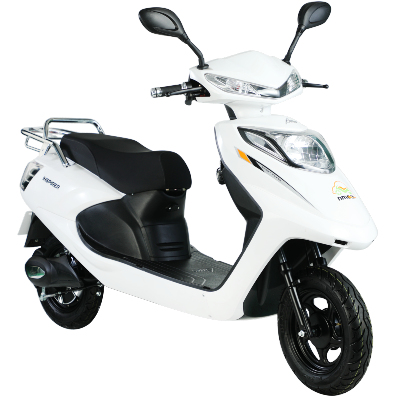Which Battery Is Mostly Used In An Electric Vehicle?
Whenever we hear an electric
vehicle first thing that comes into our mind is its battery. The battery
is considered the most critical part of an electric vehicle such as electric
scooty, electric bike, etc. There are many EV batteries in the market but 3
types are mostly used in the current generation of electric vehicles. This
feature lists the 3 prominent EV batteries in India for E-Scooty and Electric Bike
In India.
Types of batteries used in electric
vehicle and their parameters
The three types of rechargeable batteries recognized by automobile
manufacturers that are suitable for EV use are Lithium-ion batteries,
Nickel-metal hydride batteries, and Lead-acid batteries.
Lithium-ion battery- You are already familiar
with this battery because a smaller version of this is used in portable devices
like mobile phones and even laptops. In the early 1990s, lithium batteries came
into the commercial holding and elevated energy density, unlike most batteries.
These are unlikely to lose their charge when not being used. This is a feature
called self-discharge. Science is all about innovation and several experts have
given credence to lithium-ion batteries which are about the closest science has
come to advancing an ideal rechargeable battery.
This type of battery is the finest choice for powering electric vehicles like Electric Scooty, electric scooters in India. Although these batteries are prohibitively expensive but still
are the most frequently used battery in an EV. This probably stands to be their
biggest disadvantage, their production costs are known to be 40% higher than
those of nickel batteries.
However, all-out research on the technology behind the battery
has led to a decrease in the production cost. The lithium-ion battery is
one-third the weight compared to the lead-acid batteries. Lithium also has
three times the cycle life and is three times more powerful.
Nickel-metal hydride battery- This came into commercial use a little earlier in the 1980s.
Nickel metal hydride batteries have superior specific energy to the led acid
ones with a theoretical voltage of 1.2 volts. The nickel-metal hydride
batteries indicate the quantity of energy stored in the battery. Although it is
remarkably low cost compared to lithium-ion batteries and is recyclable.
These batteries are proven well to use in EVs. You can be
expecting your car to run over 100,000miles with these batteries and an average
of 5-6 years of battery life. Regarding the use in e scooter and Electric
Bikes in India, the disadvantages
include low charging efficiency, self discharge up to 12.5 % per day at room
temperature, and the heat generation rate during fast charging and discharging.
Lead-acid battery- These are the oldest type of batteries formulated in 1859 and
are still being used. They are recyclable and they hold a mild solution of
sulfuric acid and a kind of vexil battery. It comes with the advantage of being
priced at a cheaper rate and has been in use for years. Led acid battery
technology is considered old-fashioned but is still definitive and
full-grown.
This battery type comes with a short lifespan of 3 years and
requires inspection of electrolyte levels considering it is made from lead they
are heavy. They provide sufficient energy of 25% to 50% of the vehicle's total
mass.
Let’s see what battery parameters are to be considered.
These are the parameters, you should be considering before picking up your
battery type.
1. Lifespan- various factors
influence the life cycle of a battery, you could give EV battery a life cycle
of 8 years or 160,000 km.
2. Safety- A carefully
designed battery management system or BMS assures safe operation.
3. The cost- Compare to the ice motor vehicle this is a disadvantage for EVs. The cost of a small ice vehicle and an EV battery system is pretty much the same.
Apply for dealership visit Electric Bike Dealership
.png)




Comments
Post a Comment